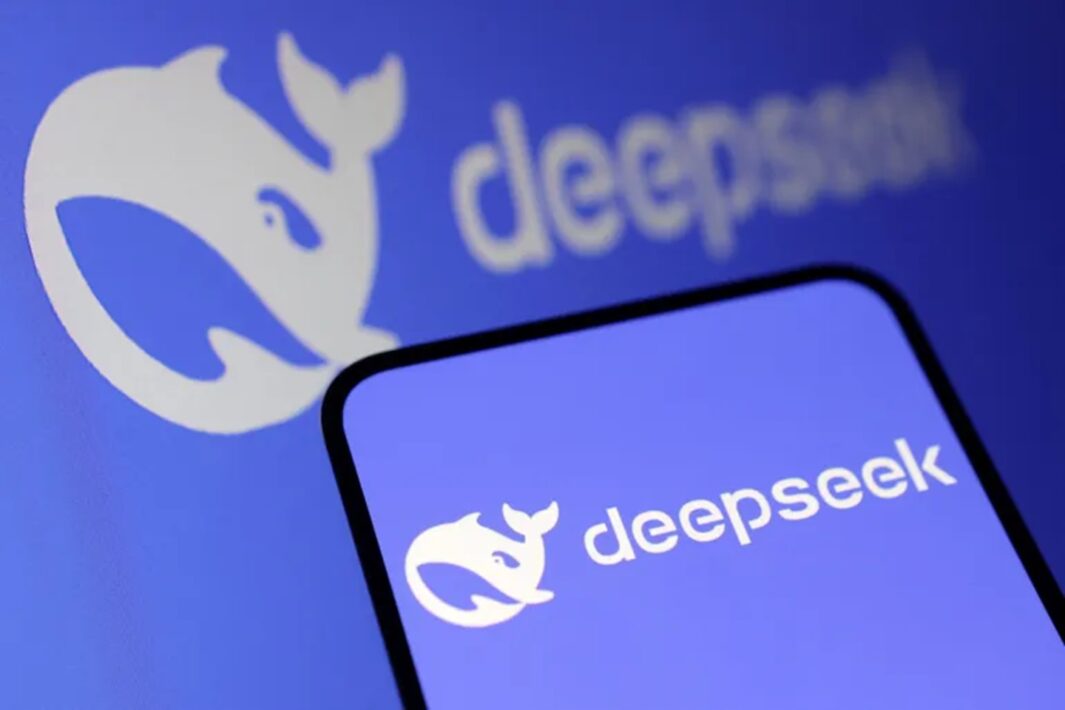The day after TikTok, the embattled Chinese-owned streaming video app, went dark in America, another Chinese digital product emerged to change the dynamics of tech-geopolitics.
AI startup DeepSeek released a large language model (LLM) that is said to be as good or possibly better, in some respects, as OpenAI’s ChatGPT. But this is not the main story.
Of greater consequence is that DeepSeek appears to have accomplished its feat using open-sourced generative AI to build and teach its LLM. DeepSeek used a process called “fine-tuning” on a large dataset of text interactions gathered from ChatGPT’s existing open-source model.
It essentially adapted a pre-trained model to their needs. And it did so far more cheaply (a mere US$6 million investment), and far more quickly than OpenAI and others who have built their own machine-learning models.
DeepSeek claims to have built its AI model without using Nvidia’s top-end AI chips – for which there currently are no substitutes, and without which (it has been assumed) no leading-edge cognitive AI models can be built.
Financial markets had made this assumption, and the shock that it might be wrong has since pommeled Nvidia’s stock.
At the time of this writing, Nvidia has dropped 17 per cent in value – some US$595 billion in loss of market capitalisation. US tech stocks, in general, lost over US$1 trillion due to sell-offs.
FAR-REACHING GEOPOLITICAL EFFECTS
Geopolitically, the arrival of DeepSeek signals potentially far-reaching effects on two fronts.
First, DeepSeek’s accomplishment places a spotlight on the AI-semiconductor nexus, which has dictated that whoever wields the world’s most advanced semiconductors controls the AI race. Chips are the foundational technology for all other leading-edge innovation.
But if this nexus can be side-stepped by simply leveraging open-sourced generative AI (without the need to access leading-edge AI chips) this levels the international playing field significantly, for everyone.
Second, if the above holds true, then it could diminish the geopolitical leverage that Washington and other governments wield through export controls, sanctions and other restrictions on tech transfer, at least regarding the development of generative AI.
Specifically, it changes important dynamics in the US-China chip war – to use the term popularised by the economic historian, Chris Miller.
DeepSeek’s achievement must be viewed through a wider lens of techno-nationalism, which holds that a country’s national security, economic strength and social stability are linked to the technological prowess of its national institutions, both public and private.
In this context, the US and China are grappling for competitive advantage across all the core power-multiplier industries, from advanced manufacturing to quantum science.
From a techno-nationalist perspective, then, DeepSeek seems to have delivered a Chinese New Year gift to Beijing, with real geopolitical benefits.
AMERICAN LEVERS DIMINISHED?
Washington and its allies have enjoyed an overwhelming advantage in its chip war with China because of its ability to control “chokepoint” technologies needed to make the world’s most advanced chips.
These chokepoints include spectacularly complex things like extreme ultraviolet (EUV) equipment made by Holland’s ASML, or etching and metrology machines made by Applied Materials and LAM Research of the US, as well as electronic design software and highly specialised chemicals and materials made by American, Japanese, South Korean, Taiwanese and European companies – all from places solidly in Washington’s sphere of influence.
To date, China has been unable to replicate these vital technology niches to fulfil its chip ambitions.
Through this AI-semiconductor nexus, advanced semiconductors have become the ultimate gateway technology.
No access to leading edge chips means no chance of excelling fully in aerospace, biotech, energy, telecommunications, quantum, and of course, AI. AI includes supercomputing, machine learning, algorithms and software. All are techno-nationalist power multipliers.
The emergence of DeepSeek could provide a bypass around these chokepoints. This means second-tier semiconductor nations can achieve first-tier AI status and enjoy many of the spillover benefits in military prowess and economic competitiveness.
THE WORLD DIVIDED INTO 3 TECH CAMPS
In December 2024, the outgoing Biden administration unleashed a final flurry of export controls aimed at blocking China’s access to semiconductor-related technology.
This latest round of export controls included 24 new groups of chipmaking tools and three types of chip design software. The restrictions blacklisted 140 new Chinese chipmaking entities and pushed restricted parameters back to cover older legacy chip making equipment.
Washington’s actions were part of its so-called “small-yard-high-fence” approach, which aims to control who gets access to strategic American technology and who gets locked out of the yard.
But perhaps the most consequential outcome was that, from a techno-nationalist perspective, Washington officially sorted the world’s nations into three distinct groups. This action, by design, was intended to accelerate the fragmentation of the international tech landscape into distinctive groups.
The first group includes America’s historic allies and security partners, all of whom enjoy mostly unfettered access to the yard. This includes Canada, Australia, the UK and Western Europe, Germany, France, Japan and South Korea.
The second group consists of a wide swathe of “middle-countries” including those in Eastern Europe, India, Saudi Arabia, the UAE, and all of Southeast Asia.
These countries face higher restrictions, and, by design, Washington will force them to choose sides between the US and China when it comes to trading and partnering around strategic technologies. This would include the building of AI systems, data centres, energy infrastructure and other power-multiplier technologies.
The third group, consisting of China, Russia, Iran and North Korea, faces the most restrictions, and is essentially banned from tech transfer from Group 1 and Group 2. Violators that transfer restricted tech to these will be singled out and punished.
But if public and private entities in any of the three country groupings can leverage open-sourced generative AI (and eventually artificial general intelligence) to achieve their own ends and reduce dependence on the two global tech superpowers, they could well avoid having to choose sides. This would change the present-day techno-nationalist calculus and give more agency to (especially) middle-tier countries.
TOO GOOD TO BE TRUE?
It is still too early to determine whether DeepSeek’s spectacular ascent was done entirely with open sourced generative AI. Initially, the company got its start by harnessing some 10,000 of Nvidia’s 100A GPU AI chips, which it stockpiled before US export controls took effect.
If these chips played or continue to play more of an outsized role than has been reported, or whether there are other elements of foreign technology that are essential to DeepSeek’s development and operation, that may yet come out.
There are similarities between DeepSeek’s claim and that of Huawei’s HiSilicon and SMIC the Chinese chip manufacturer, in 2023, who claimed to have overcome US export controls and successfully produced an entirely homegrown 7-nanometre chip for Huawei’s Mate 60 Smartphone. As it turned out, Dutch-made deep ultraviolet (DUV) machines (also stockpiled before export control deadlines) had been used.
Regardless of how the DeepSeek narrative turns out, it will face many of the same issues that TikTok has in the United States. As a Chinese-owned platform, there will be concerns about data privacy and the China’s Communist Party’s access and influence.
President Donald Trump, as he has done with TikTok, may demand US ownership, and may extract concessions in other ways, perhaps demanding large US investments in AI research and development ventures such as the recently announced US$500 billion US Stargate AI initiative.
Simultaneously, the US government will clearly look for ways to choke off strategic tech that today may have found its way onto open source platforms.
But what is clear is that DeepSeek has changed the rules of the AI game, and with it the rules of techno-geopolitics.
The commentary was first published on CNA.
Photo by Dado Ruvic/Reuters





